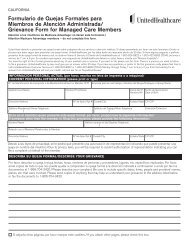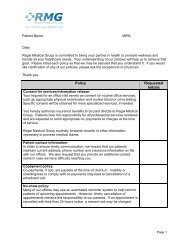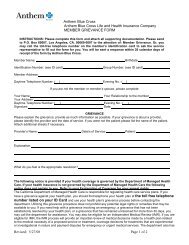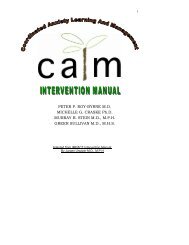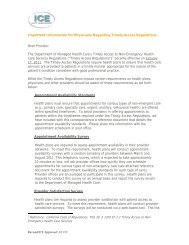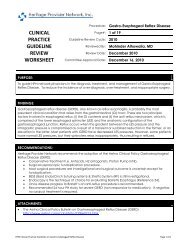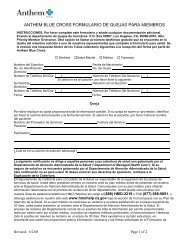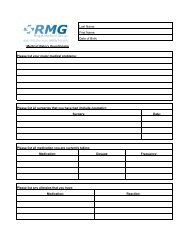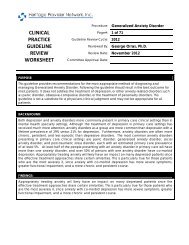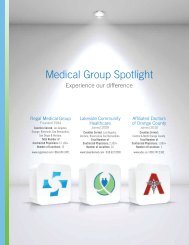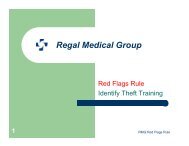Guide to Clinical Preventive Services 2012 - Agency for Healthcare ...
Guide to Clinical Preventive Services 2012 - Agency for Healthcare ...
Guide to Clinical Preventive Services 2012 - Agency for Healthcare ...
You also want an ePaper? Increase the reach of your titles
YUMPU automatically turns print PDFs into web optimized ePapers that Google loves.
SCREENING FOR CHRONIC OBSTRUCTIVE PULMONARY DISEASE USING SPIROMETRYCLINICAL SUMMARY OF U.S. PREVENTIVE SERVICES TASK FORCE RECOMMENDATIONPopulation Adult general populationRecommendationDo not screen <strong>for</strong> chronic obstructive pulmonary disease using spirometry.Grade: DAdditional PopulationIn<strong>for</strong>mationThis screening recommendation applies <strong>to</strong> healthy adults who do not recognize or report respira<strong>to</strong>ry symp<strong>to</strong>ms <strong>to</strong> a clinician.It does not apply <strong>to</strong> individuals with a family his<strong>to</strong>ry of alpha-1 antitrypsin deficiency.Risk fac<strong>to</strong>rs <strong>for</strong> COPD include:Risk Assessment● ● Current or past <strong>to</strong>bacco use.● ● Exposure <strong>to</strong> occupational and environmental pollutants.● ● Age 40 or older.Spirometry can be per<strong>for</strong>med in a primary care physician’s office or a pulmonary testing labora<strong>to</strong>ry. The USPSTF did notreview evidence comparing the accuracy of spirometry per<strong>for</strong>med in primary care versus referral settings.Screening Tests 1 For individuals who present <strong>to</strong> clinicians complaining of chronic cough, increased sputum production, wheezing, or dyspnea,spirometry would be indicated as a diagnostic test <strong>for</strong> COPD, asthma, and other pulmonary diseases.These services should be offered <strong>to</strong> patients regardless of COPD status:Other Approaches <strong>to</strong> thePrevention of PulmonaryIllnesses● ● All current smokers should receive smoking cessation counseling and be offered pharmacologic therapies demonstrated<strong>to</strong> increase cessation rates.● ● All patients 50 years of age or older should be offered influenza immunization annually.● ● All patients 65 years of age or older should be offered one-time pneumococcal immunization.Other Relevant USPSTFRecommendationsClinicians should screen all adults <strong>for</strong> <strong>to</strong>bacco use and provide <strong>to</strong>bacco cessation interventions <strong>for</strong> those who use <strong>to</strong>baccoproducts. The USPSTF <strong>to</strong>bacco cessation counseling recommendation and supporting evidence are available athttp://www.uspreventiveservicestask<strong>for</strong>ce.org/uspstf/uspstbac.htm.1 The potential benefit of spirometry-based screening <strong>for</strong> COPD is prevention of one or more exacerbations by treating patients found <strong>to</strong> have an airflow obstruction previously undetected. However, even in groups withthe greatest prevalence of airflow obstruction, hundreds of patients would need <strong>to</strong> be screened with spirometry <strong>to</strong> defer one exacerbation.For a summary of the evidence systematically reviewed in making these recommendations, the full recommendation statement, and supporting documents,please go <strong>to</strong> http://www.uspreventiveservicestask<strong>for</strong>ce.org.21




